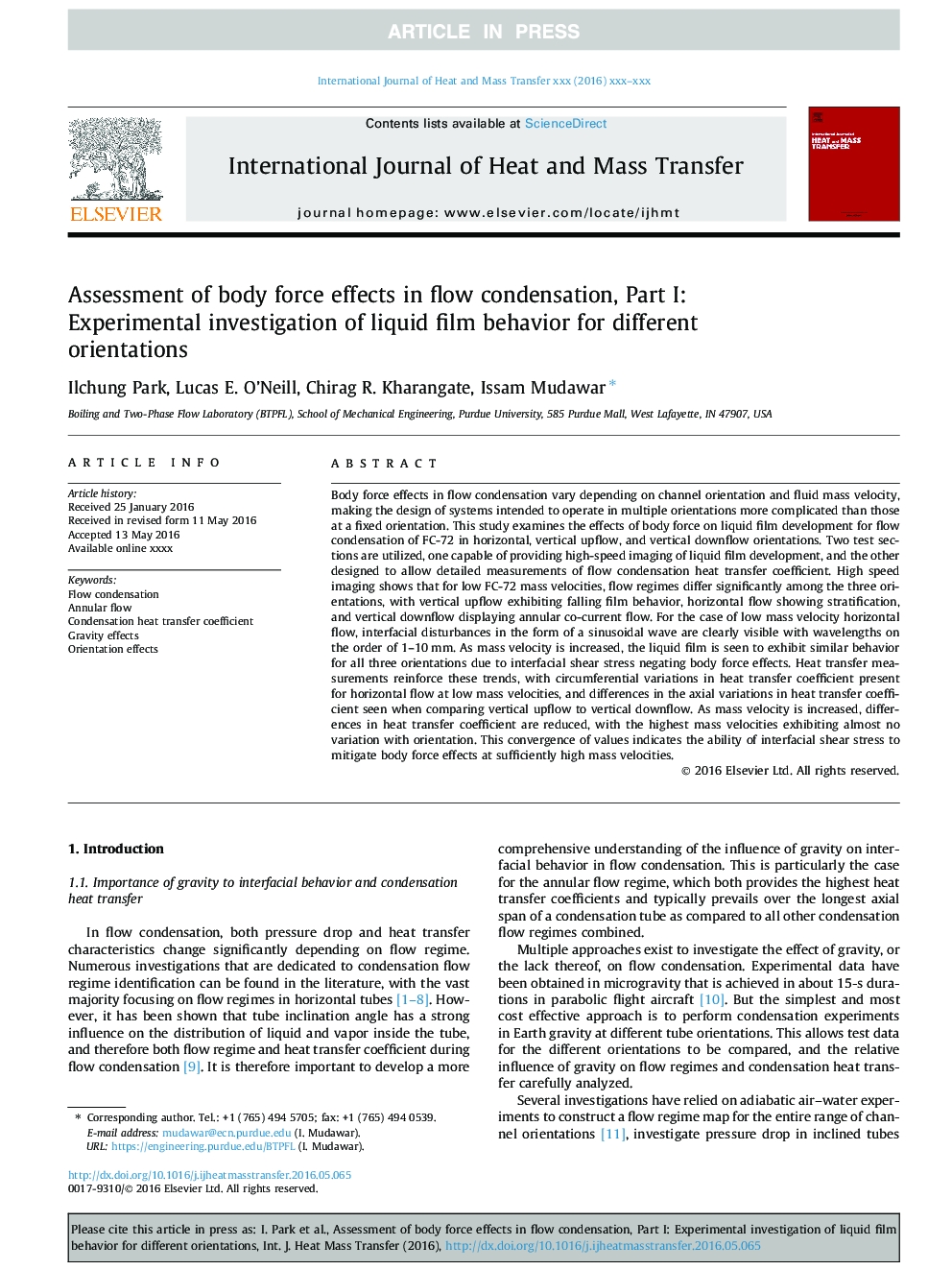| کد مقاله | کد نشریه | سال انتشار | مقاله انگلیسی | نسخه تمام متن |
|---|---|---|---|---|
| 4994772 | 1458036 | 2017 | 18 صفحه PDF | دانلود رایگان |
عنوان انگلیسی مقاله ISI
Assessment of body force effects in flow condensation, Part I: Experimental investigation of liquid film behavior for different orientations
ترجمه فارسی عنوان
بررسی اثر نیروی بدن در تراکم جریان، قسمت اول: بررسی تجربی رفتار فیلم مایع جهت گیری
دانلود مقاله + سفارش ترجمه
دانلود مقاله ISI انگلیسی
رایگان برای ایرانیان
کلمات کلیدی
تراکم جریان، جریان انحرافی، ضریب انتقال حرارت گرم کننده، اثرات جاذبه، اثرات جهت گیری،
موضوعات مرتبط
مهندسی و علوم پایه
مهندسی شیمی
جریان سیال و فرایندهای انتقال
چکیده انگلیسی
Body force effects in flow condensation vary depending on channel orientation and fluid mass velocity, making the design of systems intended to operate in multiple orientations more complicated than those at a fixed orientation. This study examines the effects of body force on liquid film development for flow condensation of FC-72 in horizontal, vertical upflow, and vertical downflow orientations. Two test sections are utilized, one capable of providing high-speed imaging of liquid film development, and the other designed to allow detailed measurements of flow condensation heat transfer coefficient. High speed imaging shows that for low FC-72 mass velocities, flow regimes differ significantly among the three orientations, with vertical upflow exhibiting falling film behavior, horizontal flow showing stratification, and vertical downflow displaying annular co-current flow. For the case of low mass velocity horizontal flow, interfacial disturbances in the form of a sinusoidal wave are clearly visible with wavelengths on the order of 1-10Â mm. As mass velocity is increased, the liquid film is seen to exhibit similar behavior for all three orientations due to interfacial shear stress negating body force effects. Heat transfer measurements reinforce these trends, with circumferential variations in heat transfer coefficient present for horizontal flow at low mass velocities, and differences in the axial variations in heat transfer coefficient seen when comparing vertical upflow to vertical downflow. As mass velocity is increased, differences in heat transfer coefficient are reduced, with the highest mass velocities exhibiting almost no variation with orientation. This convergence of values indicates the ability of interfacial shear stress to mitigate body force effects at sufficiently high mass velocities.
ناشر
Database: Elsevier - ScienceDirect (ساینس دایرکت)
Journal: International Journal of Heat and Mass Transfer - Volume 106, March 2017, Pages 295-312
Journal: International Journal of Heat and Mass Transfer - Volume 106, March 2017, Pages 295-312
نویسندگان
Ilchung Park, Lucas E. O'Neill, Chirag R. Kharangate, Issam Mudawar,
